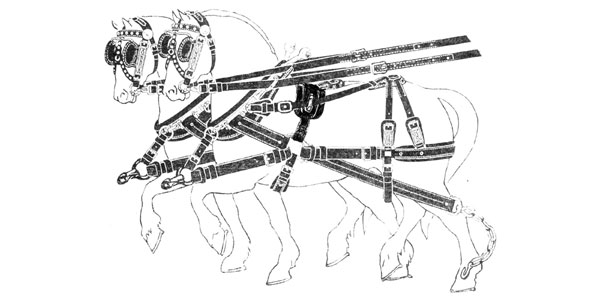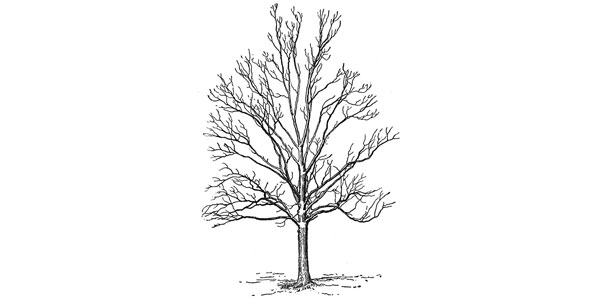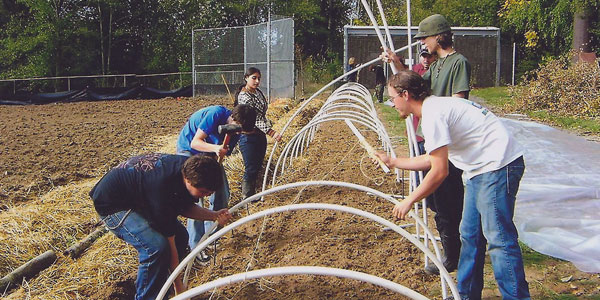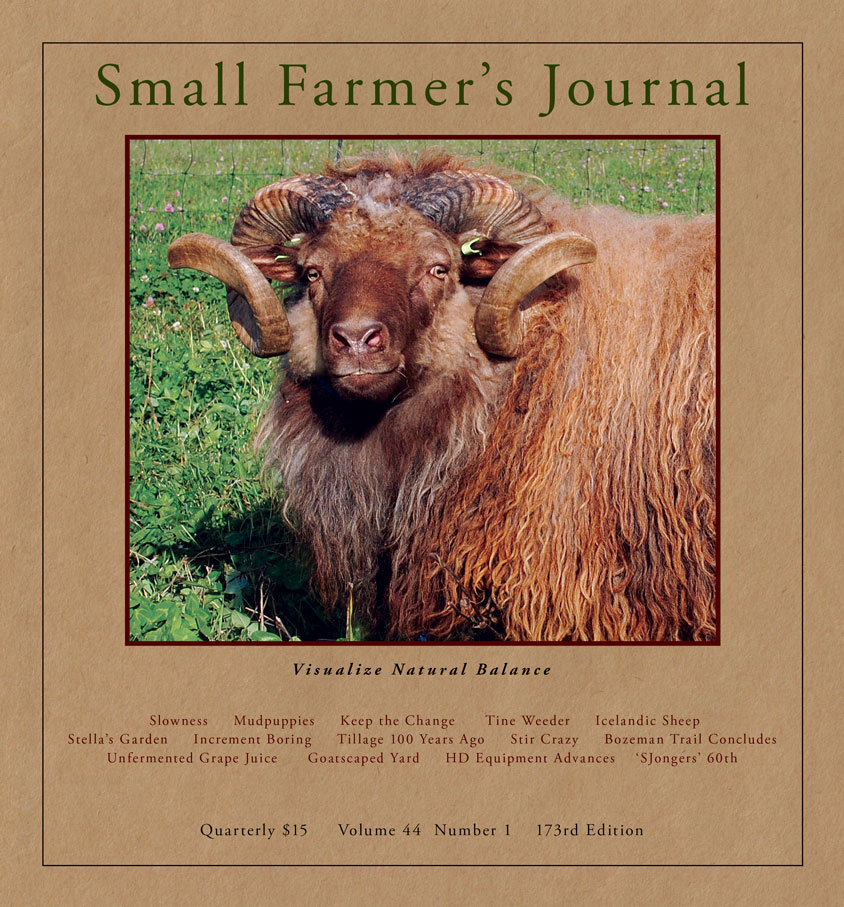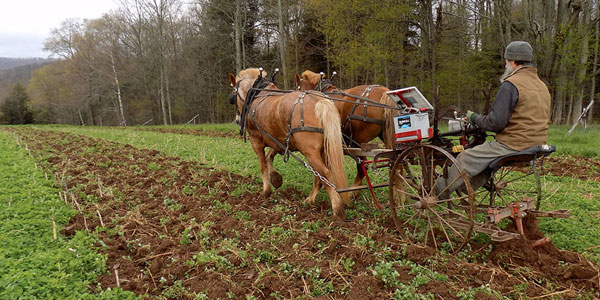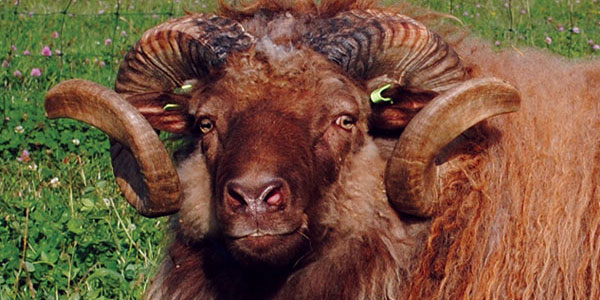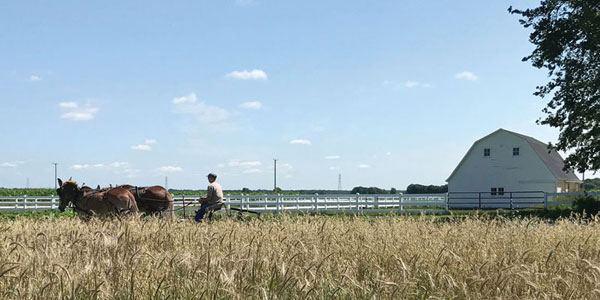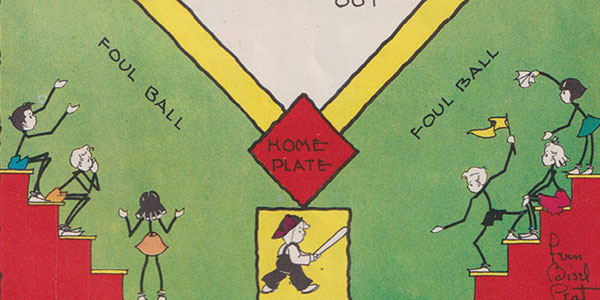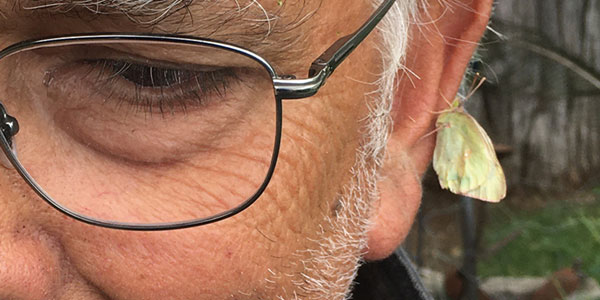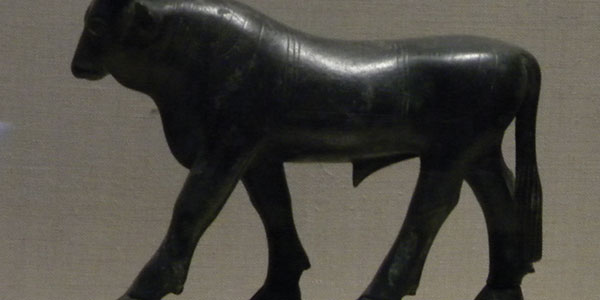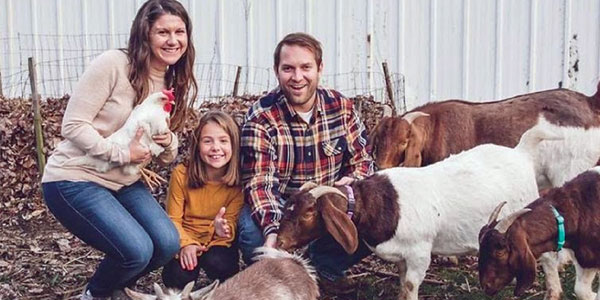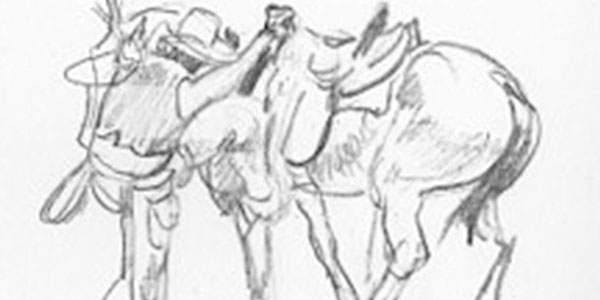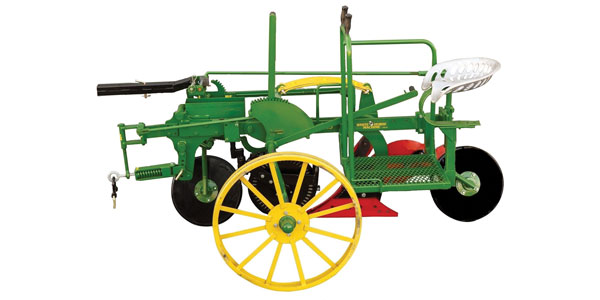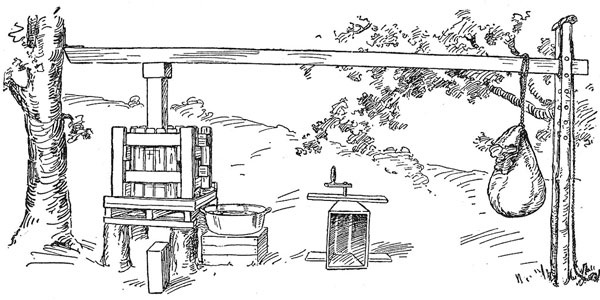Back Issue Vol: 44-1
FORWARDS, Back & for Words Again
So far most major farm organizations support our present system and the politicians who do not stand up to it, and I hear no protest from their members. It may be different in Oregon, but here in the Midwest we still see hedges being bulldozed, wetlands destroyed to make room for larger row crop fields and applications for building more CAFOs. Missouri’s neighbor states, Iowa and Illinois are the most de-naturalized states in the nation, and the reason for that is agriculture. So farmers as a group have no reason to pat ourselves on our backs, like it is so frequently done in official statements or ads on TV.
Going STIR Crazy
A big focus of tillage for our dryland market garden is improving rainfall infiltration and moisture retention. Beginning with skim plowing in the early 80’s, we have added a half dozen shallow tillage practices to maintain moisture conserving residues in the top of the soil. Recently, we were introduced to an objective method for measuring and comparing these moisture preserving practices, thanks to joining the Soil Health Benchmark Study conducted by the Pennsylvania Association for Sustainable Agriculture. One of the benchmarks for this research project, which includes over 60 vegetable, grain and dairy farms, is tillage intensity. This numerical index is based on the Soil Tillage Intensity Ratings developed by the Natural Resources Conservation Service.
Icelandic Sheep for the Small Farm
Icelandic sheep belong to the group of sheep known as the Northern European Short-tails, a group of relatively primitive sheep that have in common, as you’d expect, their short tails that never need to be docked, and their origin in countries and regions of northern Europe, including Iceland, the Baltic states, the Faroe Islands, Finland, Norway, Russia, Sweden, Shetland and south through Scotland. The sheep of Iceland were brought to the island by the Vikings in the 8th – 9th century. There they make up a substantial percentage of the agricultural output of the country, and are a commercial production breed.
In Praise of Slowness
It is a ritual of sorts. I open the tack room door and take the pair of leather bridles down from the cast iron hook bolted to the pinewood wall and set them down within arm’s reach. Our two big mules, casually chewing their morning oats, quietly watch as I get things ready. I exit the barn for a few minutes to attend to some other tasks outside and when I return, these auburn colored drafts are standing stock still, side by side in their stall, patiently waiting to be harnessed. They know.
Increment Boring
I brushed first the snow and then moss from a deep furrow in the bark, positioned the borer neatly perpendicular to the tree at breast-height and began to turn hand over hand until the teeth caught the first layer of wood. After tearing through the cambium, I set about burrowing my way like a bark beetle into the sapwood, the first twenty years were not hard to press through. I briefly remembered 9/11 and Y2K and realized all at once that the tree did, too. All the chemical makeup of those years was etched into the wood. My memories, too, as far back as 1992. Rings were recording a host of bad boyfriends, an awkward puberty, the time I met Smokey Bear and cried, rug and rope burns.
Just for Kids – Summer 2020
Color the Farm Animals • Paddy’s Pig • Peter Pig’s Baseball Game • Menagerie Land Paper Dolls
Keep The Change
Whether it be a gesture of generosity, a rudely subtle tuck and hide of the obligatory tip, or an implied curse, the phrase ‘keep the change’ is deeply ingrained in our transactional language. Recently I woke from a pleasant dream with that phrase on my lips but it was attached to an entirely different sentiment. It was an observation that with the best natural farming our reward comes because we, individually and collectively, may get to keep the change we create.
LittleField Notes: Tales From the Bozeman Trail Part 3
Their bottoms were sore, their throats dry, the high elevation robbed their sea-level lungs of breath. They felt acutely each bump and jolt of our authentic springless farm wagons. Most folks however, took it in stride, and immensely enjoyed the challenge and adventure of it all. That’s why they had come to Montana in the first place, to experience a bit of unvarnished reality. We made it as comfortable as possible, but there is no getting around the fact that traveling 12 to 15 miles a day across open dry country by horsepower alone requires a certain determination and grit no matter the era. Mostly things went along quite well, but there were yet a few mishaps that summer that are worth the retelling.
Mud Puppies
Then, when everyone had about given up twice over, out of what looked like a clear blue sky the rains came. And when the rains came they came hard — it rained a year’s worth in a couple weeks. As with most of the cowhands around here, that first day I just stood out in the rain whoopin’ and hollerin’ and got soaked to the skin. Renaldo and Clyde came out of the bunkhouse to laugh with me or at me, I didn’t care, and we cut a little buck and wing skippin’ around in the puddles. Before I got back in the house, my old everyday boots had about fell apart. But I wasn’t likely to forget, and got busy storing up what I could, and preparing for the next dry spell that might come any minute.
My Goatscaped Lawn Turned Farm
The logical and fun solution to vegetation management for us has been employing goats. We do not have the time, nor the income to support mechanical means of clearing brush. Our goat cost averaged about $100 each — a much smaller upfront investment. In addition, the goats can do some work while we are occupied with our day jobs. Above all, we believe utilizing goats instead of traditional mechanical and chemical means impacts our local biodiversity in a positive way. We want plant species that naturally grow here to flourish and provide food and habitat for wildlife.
Roots and Wings
One day in May, I got a call from my father. As a big fan of the Small Farmer’s Journal, he asked me to renew the subscription via internet (technology is not yet his thing). He took the opportunity to tell me that he would like to write an article for the Journal, as he previously did (see photo essay, Volume 40, Number 1), but that the work on the farm limits his time. With my brothers and sisters, we had the idea for his 60th birthday to give him this surprise: to share with you our story and our most beautiful memories we had during our childhood on the farm.
Spanning the Ditch to the Past
Reynolds’ book offers a treasure-trove of artwork, photos and letters that show how Joe’s friendly contacts grew into an artistic and historical network. As with his entree to Charles Russell, Joe De Yong would introduce himself in an illustrated letter, and engage the stranger with kindred interests. It was an easygoing, direct and generous approach, offering peeks behind-the-scenes into his workshop, for those who might need or want what he had to offer. Joe De Yong quickly became an inveterate and skilled letter-writer, and his letters were a preferred method because of his deafness, where he could unfold an expert understanding, aided by detailed notes and labeled drawings.
Stella’s Food Garden
Shortly after we moved in to our current house, our then eight-year-old daughter, Stella, looked at the scraggly, empty lawn of her new home and asked, “Could we turn it into a food garden?” Stella’s food garden provides a little more than 15% of our family’s annual food. Many reading this will laugh, as our largest piece of antique farm equipment is a now 30-year-old rusty and rebuilt pale-blue wheelbarrow. But we look forward to our copy of Small Farmer’s Journal and page through the images of livestock, fields and crops with a curious and magnetic fascination as if it were an old family album, and this amazing feeling of connectedness to all the others who coax things from the earth in America had me pen this letter to all my brother and sister farmers.
The State of Horsedrawn Technologies
Within true horse-power circles, where natural partnerships with working animals are embraced and cherished, the family unit is paramount. Tools are being designed today so that a husband and wife with two to four work animals can see their work done. Scale is a defining aspect, going forward and backward. It is liberating and it is enlivening. Elegant even. And for us, we see the evidence both from afar and up close. Now to focus on what 25 years has taught us.
Tillage 100 Years Ago: Interviewing Two Good Farmers
Cultivators are now so varied and improving every year, that it is hard to say that any particular one is the best. There are many patterns more or less valuable. My rule in all such things, when purchasing at an implement or a seed warehouse, is to ask what tool is in largest demand for a certain purpose, and I usually find that the public in the long run finds out which is the best article, and that the article most in demand is the one usually having the most merit.
Unfermented Grape Juice
Two general methods are employed in preparing pasteurized grape juice; these are known as the hot-press method, which is the older, and the cold-press method, which is simpler and more generally applicable. The essential difference between the two methods is indicated by the terms employed to designate them. In the hot-press method the crushed fruit is heated and the juice removed by pressing the fruit while hot; in the cold-press method no heat is employed when extracting the juice. By the cold-press method clear, brilliant juices are obtained, while the use of the hot-press method secures a somewhat larger yield of dark, more or less viscid juice.

